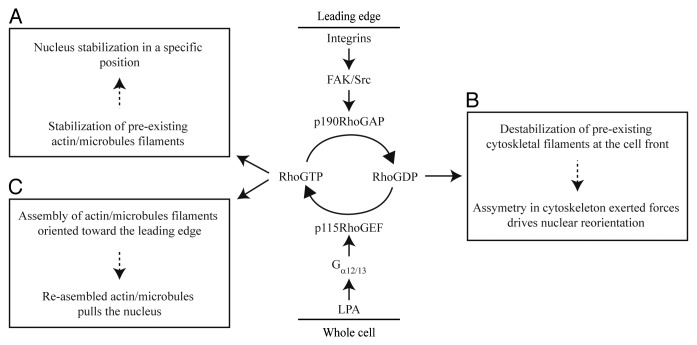Figure 3. Signaling pathways involved in the regulation of nuclear reorientation. Two signaling pathways that converge at small GTPase Rho regulate cycling between active (GTP-bound) and inactive (GDP-bound) state of Rho allowing the cytoskeleton remodeling and subsequently nuclear reorientation. LPA signaling induces the activation of heterotrimeric G proteins, and consequently, RGS-RhoGEF, such as p115–RhoGEF, which directly activates Rho. Since LPA is a soluble mitogen it presumably activates Rho within cell uniformly. Active Rho regulates the stabilization of pre-existing cytoskeletal filaments that anchor the nucleus in immobile state (box A). Acute integrin engagement to ECM at the cell front activates FAK/Src signaling complex that recruits Rho inhibitor p190RhoGAP to the leading edge. Transient Rho inhibition at the leading edge leads to the destabilization of cytoskeletal filaments and consequent asymmetry in cytoskeletal forces may induce nucleus reorientation (box B). Since integrin-mediated Rho inactivation is transient, new cycle of Rho activation allows re-assembly and stabilization of new cytoskeletal filaments oriented toward the leading edge that may pull the nucleus and contribute to the nucleus reorientation (box C).

An official website of the United States government
Here's how you know
Official websites use .gov
A
.gov website belongs to an official
government organization in the United States.
Secure .gov websites use HTTPS
A lock (
) or https:// means you've safely
connected to the .gov website. Share sensitive
information only on official, secure websites.
